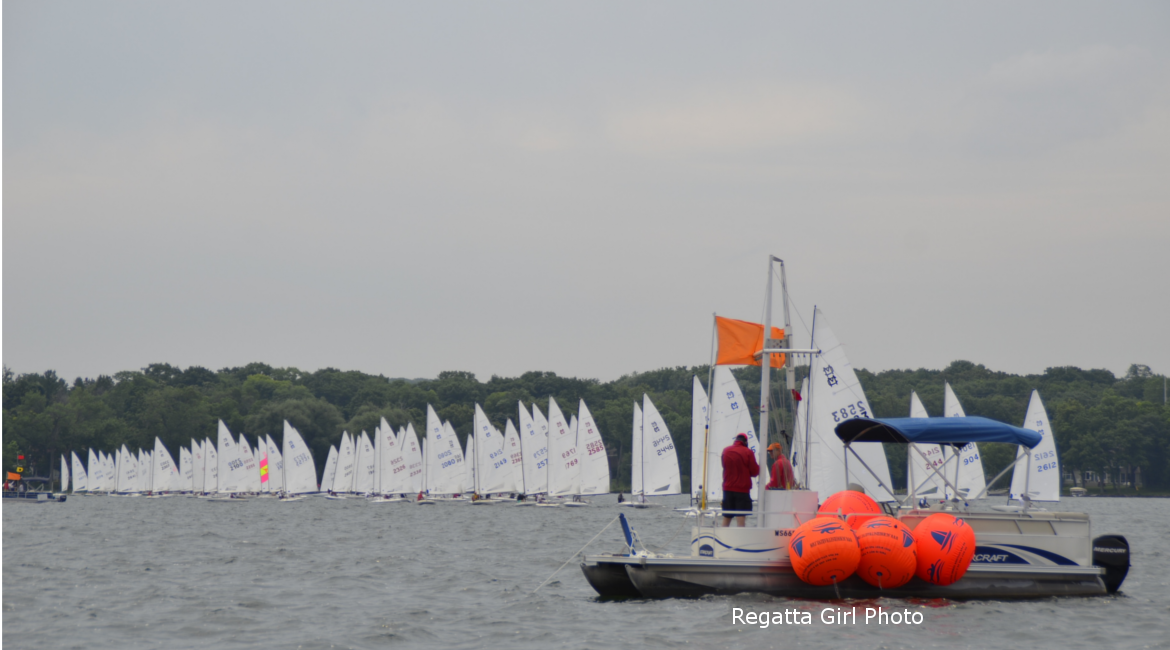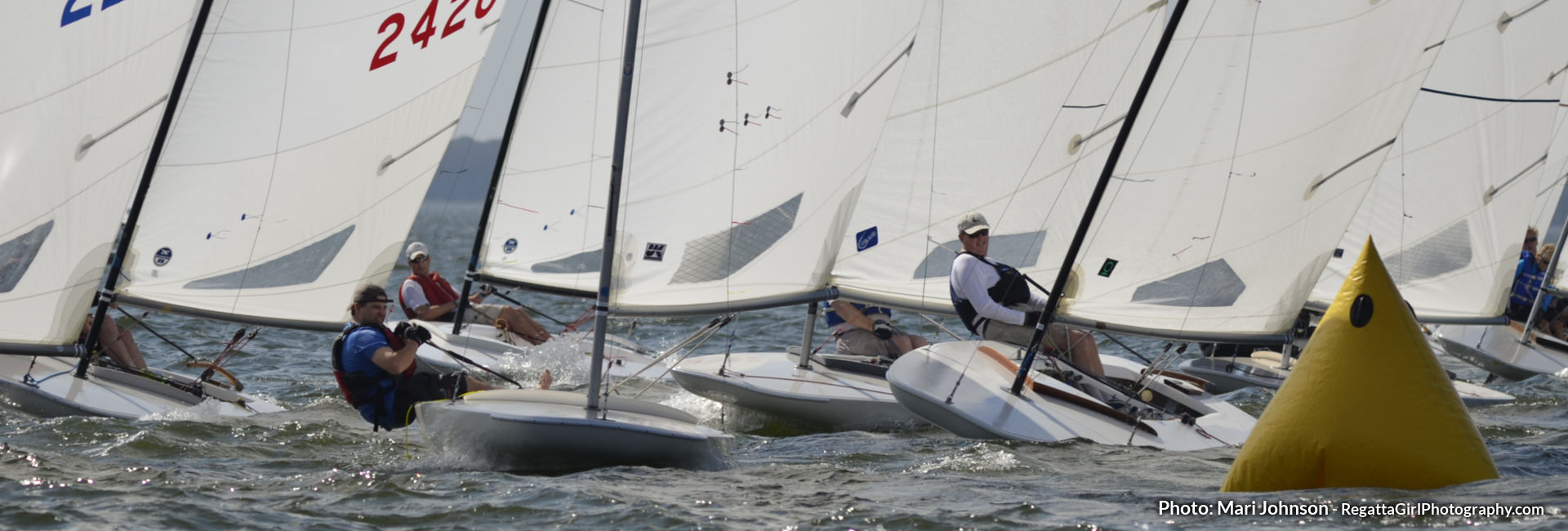Struggling to get over the hump and race with consistency? SailZing.com asked Ted Keller to share his thoughts on this crucial skill. Ted sails in several classes and serves as tactician on the sport boat circuit. He is part of the Melges team and teaches at the popular Zenda U sessions for MC sailors. Follow Ted on his Facebook page – TK Sailing.
Here are Ted’s insights.
The Value of Consistency
One of the hardest things in regatta sailing is putting together a string of consistent race results.
In larger fleets, the law of averages usually comes in to play and offsets that good race with a bad race.
There is so much going on in a large fleet: lots more boats to get in your way, long starting lines and long legs,
crowded mark roundings with much more disturbed air and water.
If you can smooth out the roller coaster ride and put together some consistent finishes, it will pay huge dividends in the overall result. The winner of the regatta may not have a single race win, and can often have an average finish of 7th place. Your goal may not be to win the regatta, but instead to finish in the top 15, or top third, or even top half. Working on consistency and avoiding the ‘big bummer’ race will be a huge step forward in reaching your goal.
It’s a process
In larger fleets, there are more opportunities to make mistakes. And some mistakes are much more expensive than in smaller fleets. On longer upwind legs, the fleet spreads further apart across the race course. The boats on the left side can be up to a mile apart from the boats on the right. These boats have more leverage, and the gains and losses in wind shifts or pressure are much more dramatic. Being on the wrong end of a big shift means a whole lot of boats are going past you.
So the process becomes that of being conservative and avoiding big mistakes. Here are some important areas to help you race with consistency.
Starting
Work on getting off the starting line clean, with the ability to sail straight for the first two or three minutes without losing your lane to the boat to leeward or being rolled by the boat to windward.
Don’t try to win the favored end, but be 10 or 12 boats up from the end, and work on having a hole below you to keep your air clear. Then you can crack off just a bit and accelerate to hit the line at maximum speed. A little less crowded spot on the line, but still in the vicinity of the favored end, makes these goals much more realizable.
If you can go straight in a clean lane and sail fast, you will have half the fleet in the rear-view mirror already.
Bad Start Recovery
Every regatta has at least one bad start. When things don’t go your way on the line and you need a bail out plan, take a breath or two and be smart. It is so easy to be rash and throw the tiller over to end up in just as bad a spot on the new tack, going even slower. Don’t turn one mistake into multiple mistakes, when they are so expensive in big fleets.
Look over your shoulder and make sure you can tack (or tack and dip) without fouling anyone, and make sure you can get going in a clean lane with clear air on the new tack. If you have to wait a few seconds for the opening, then wait. Then tack into the better lane, get the boat going on the new tack, settle in and refocus.
Upwind
Going upwind on the large racecourse, I try to avoid the corners and maintain the ability to benefit from the shifts on either tack. Keep it simple: sail for the pressure on the water, get in that pressure and then get on the lifted tack. This keeps you centered up on the race course for the most part.
Chasing the pressure all the way out to one side of the racecourse is a high risk, high reward deal. You might hit the home run and be leading the race. Or it may shift back with you leveraged all the way out on the wrong side watching the fleet cross your bow. On a shifty day, the odds are good that sooner or later, it’s going to shift back.
The goal is to play those odds and position yourself vs the fleet where you are likely to gain some but less likely to lose a lot.
It’s a mindset
There’s one more step beyond sailing smart, conservative, and avoiding the ‘big bummer:’ having the mindset that consistency will pay and be worth the effort.
Reset after Every Race
It’s easy to have a good race and be really excited and looking forward to getting to the keg and telling everyone about it. It’s important to be disciplined and hit the ‘reset button.’ Refocus and start the process over again. I think about Saturdays at the MC Blue Chip at Spring Lake with four super-competitive races in one day, telling myself “let’s go do it again.”
Every Boat Matters
At regattas, we’ve all seen how many places are decided by one or two points. And we’ve all felt the “if only blues:” if I hadn’t messed up that mark rounding or missed that last shift I’d have finished in 3rd! Every boat really does matter.
The championship teams I know, or have been on, sail just as hard, just as focused, whether in 1st place or 35th. When you have a bad start or a big setback and can keep your cool and work your way back through the fleet, you have that ‘fighter pilot’ mindset.
Recover with the Basics
When something goes wrong, it’s too easy to send it to a corner, hoping for a miracle. The championship mindset is to grind your way back through the fleet with boatspeed, clear lanes, and hitting every shift. It’s a lot easier to see the lifted tack with plenty of boats in front of you pointing the way.
Turning that 35th into an 11th can save your regatta, and deliver the consistency we are looking for. Those moments are almost as much fun to share around the keg!
Related Content:
Vincent Porter Shares Race Course Notes at ILYA Championship Regatta – reinforces the need to avoid the corners
2017 MC-Scow Masters Championship – Race Course Notes – winners discuss consistency under difficult conditions
Sailors Helping Sailors
Will you share your knowledge with your related Comments below?





